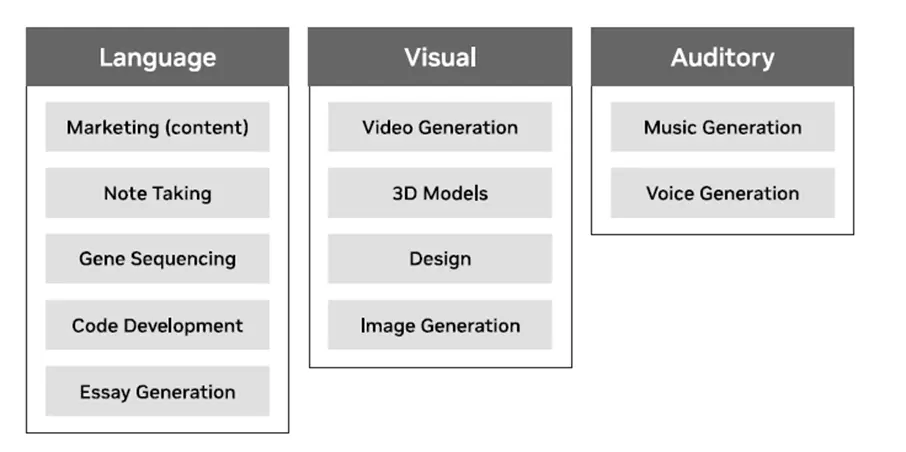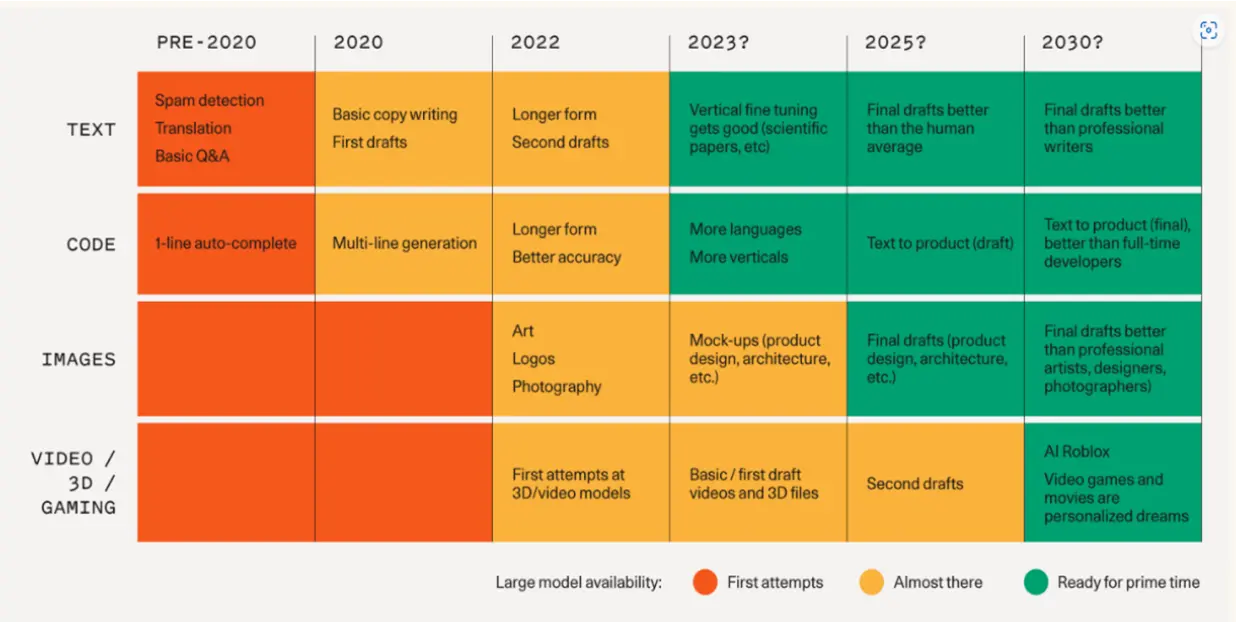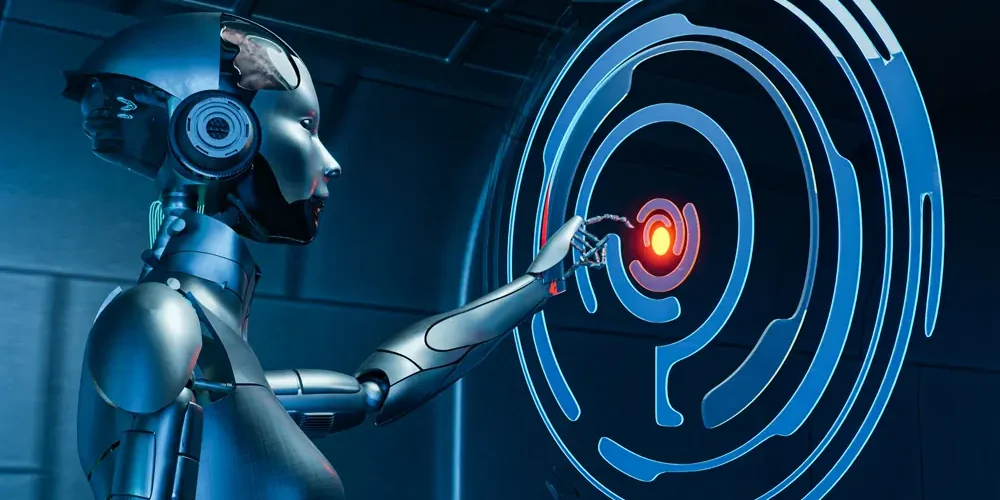Generative AI represents a significant departure from traditional AI, which relies on analysing and processing existing data to make predictions and recommendations. Traditional AI models are trained on large datasets to recognize patterns and relationships between variables, which are then used to make predictions and decisions on new data inputs. On the other hand, generative AI focuses on creating new data that does not already exist in the training dataset, unlike traditional AI systems that produce predictable and consistent outputs based on the input data and predefined rules.
Generative AI uses algorithms and models specifically designed for generating new content, such as images, music, and text. Generative AI has a wide range of applications in various industries, including marketing, healthcare, music, and engineering.

- Image generation for illustrations: With generative AI, anyone can create graphics based on a specified context, topic, or place by converting words into visuals. This application can be beneficial for marketing campaigns, helping designers produce realistic graphics that are visually appealing.
- Image-to-photo conversion: This use case finds applicability in the healthcare industry, as it enables the creation of realistic depictions based on rudimentary pictures or sketches. It is also used in map design and visualizing X-ray results.
- Image-to-image generation: This application involves altering an image’s external characteristics, such as color, material, or shape while preserving its fundamental properties. This use case can benefit retail and video/image surveillance industries by transforming daylight photographs into nocturnal ones.
- Music experience optimization: Generative AI can produce fresh audio material for ads and creative purposes, improving the listening experience on social media or music platforms like Spotify. This application can also generate short clips or audio snippets for various purposes.
- Text generation:This use case involves generating dialogues, headings, and ads, and it has enormous applications in the marketing, gaming, and communications sectors. Generative AI can produce real-time chats with customers or create product details, blogs, and social media materials.
- Equipment design: Generative AI can generate machine components and subassemblies, optimizing designs with material efficiency, clarity, and manufacturing efficiency in mind. In some cases, the design can be fed into a 3D printing machine, allowing for the automatic production of parts.
- Coding: Generative AI can generate code without human coding, making it an essential tool for professionals and non-technical individuals. This application represents the next step in the evolution of no-code application development, making software development more accessible and efficient.
The Future of Generative AI

- Generative AI is a game-changer in the field of AI because it enables computers to be creative and generate something new, which sets it apart from most AI systems that are primarily used as classifiers. Its impact is being felt not only in the art and marketing industries but also in fields such as pharmaceuticals, MedTech and biotech, where it has the potential to drive new discoveries and solutions that can benefit humankind.
- In the pharmaceutical industry, for example, generative AI can be used to discover new drugs and treatments by analysing vast amounts of data and generating new hypotheses based on that data. It can help speed up the process of drug discovery by reducing the time and resources needed to identify promising compounds, which could ultimately lead to faster development and approval of new medicines.
- Similarly, in the field of MedTech, generative AI can be used to create personalized treatment plans for patients based on their medical history, symptoms and other factors, which can also be used to design medical devices and implants tailored to patients’ needs for more effective treatments and improved outcomes.
- Another area where generative AI is making an impact is in the field of architecture and design. Architects and designers can use generative AI to create new and innovative designs that are optimized for specific functions, such as energy efficiency or structural stability, leading to the development of buildings and structures that are more sustainable and environmentally friendly.
- Moreover, generative AI is also used in the gaming industry to create more realistic and immersive gaming environments. It is used to generate new game content, characters, and storylines that are unique and engaging, providing players with a highly personalized gaming experience.
- As generative AI continues to evolve and improve, its applications are expected to expand further, with new use cases emerging across industries. With the advent of advanced machine learning modelslike OpenAI’s GPT-4, we can expect to see more generative AI advancements that could transform how we use the internet and interact with digital content.
Author: sabya
1 Comment
Comments are closed.


Hi, this is a comment.
To delete a comment, just log in and view the post's comments. There you will have the option to edit or delete them.